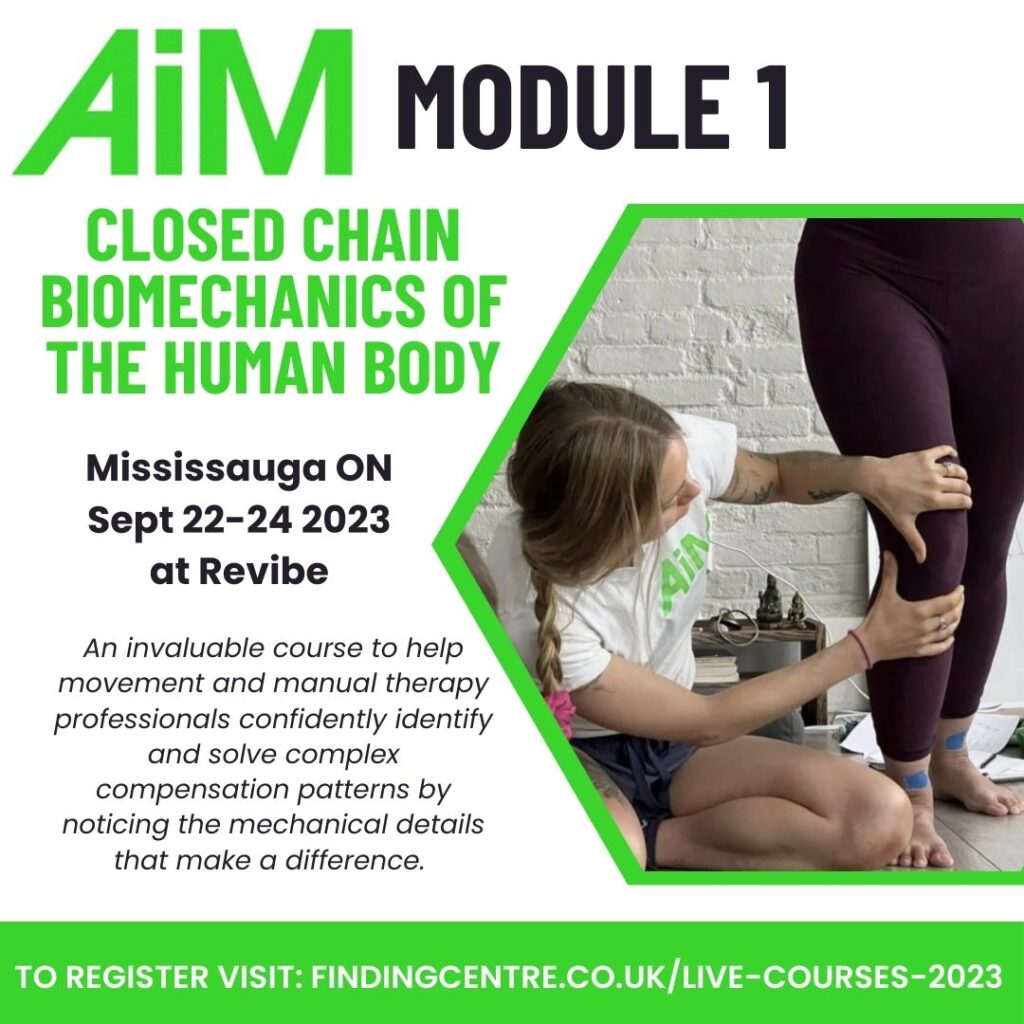Yeah, yeah bunions are a trendy topic and I’m cautiously hopping on the bandwagon to offer A perspective influenced by my training with Anatomy in Motion (fully disclosing my biases as an instructor).
Do I have anything new or groundbreaking to add to the bunion discussion? Nope.
Do I have any revolutionary evidence or new theories to prove the causative mechanism for bunion formation? Nope.
Do I really know anything? Not really.

In a perfect world, we’d want to understand what factors led to the bunion(s) forming in the first place… Shit footwear? “Genetics”? Repetitive poor movement of the body above? Previous injury? Probably a little bit of everything.
Regardless of the causal factors, it should be empowering to hear that there are some consistent mechanical findings that often go together with a bunion that you can start to address right away.
First, watch this:
As I describe in the above video, a common mechanical consistency with most buniony feet is that the joints posterior to the 1st MTPJ DO NOT GAP on the medial border of the foot and, instead, the big toe joint is doing allllll of the gapping (abduction). A good strategy would be to start to redistribute the gapping of the medial border across ALL joints, not just the one MTPJ.
I think some people call that load-sharing, a term most commonly used in reference to spine motion and can describe why some people have back pain.
Much like a spine with a hinge point at the thoracolumbar junction, through which all their extension is occurring, a foot with a “hinge point” at the 1st MTPJ, through which all their pronation is occurring can lead to a structural distortion over time that can become stiff and rigid and not super comfortable.
The intention of the exercise I demo in the video is to MINIMIZE the valgus/ABduction/ER/gapping (whatever you want to call it) motion of the big toe, and MAXIMIZE joint opening at the other joints on the medial border of your foot, encouraging healthy pronation mechanics with even joint motion distribution through the entire foot.
And if you understand that as a movement principle, you can get really creative with how you go about working with a bunion, or any part of the body.
What about toe spacers?
In the video, I am using the sock-between-the-toes technique in a way that is reminiscent of a toe spacer. But this is not meant to be a passive solution, like toe spacers often are portrayed as. The goal is use the sock as a tool to re-educate your foot to move differently. Not to hold all the toes apart 24/7 in hopes it will change foot mechanics. Like putting a book under your pillow hoping to learn passively in your sleep… I WISH it worked that way.
I’m sure there is a time and a place for toe spacers as a passive tool, but I’ve personally never recommended people to use them, nor have I ever used them myself (nor have I ever told anyone to STOP wearing toe spacers- Your feet, your choice). Except for a few times I painted my toe-nails…

Here’s another creative set-up one of my clients came up with to redistribute her big toe’s excessive valgus to her forefoot and rearfoot:

The band is pulling her valgus big toe into ADduction (towards midline of the body), while she pronates her foot to encourage opening of the joints on the medial border of her foot without excessive big toe bunionization (that’s totally a word). The black AiM wedge is promoting inversion of her forefoot to further encourage healthy pronation mechanics.
Want to learn more?
If you are a manual therapy or movement practitioner and you’d like to learn more about foot mechanics in gait, I will be teaching an Anatomy in Motion Module 1 seminar on Sept 22-24 2023. If you are in the Greater Toronto Area, come nerd out!
This was a quick overview, not intended to be specific medical advice. If you are looking for help for your own body, it is important to receive individualized guidance for your body’s unique issues. Get a professional you trust to assess your unique needs, or get in touch if you’d like to work together to find movement-based solutions to help your body move and feel better.


